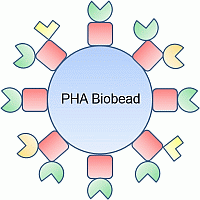Polyhydroyxalkanoate Synthase Fusions as a Strategy for Oriented Enzyme Immobilisation
Abstract
Share and Cite
Hooks, D.O.; Venning-Slater, M.; Du, J.; Rehm, B.H.A. Polyhydroyxalkanoate Synthase Fusions as a Strategy for Oriented Enzyme Immobilisation. Molecules 2014, 19, 8629-8643. https://doi.org/10.3390/molecules19068629
Hooks DO, Venning-Slater M, Du J, Rehm BHA. Polyhydroyxalkanoate Synthase Fusions as a Strategy for Oriented Enzyme Immobilisation. Molecules. 2014; 19(6):8629-8643. https://doi.org/10.3390/molecules19068629
Chicago/Turabian StyleHooks, David O., Mark Venning-Slater, Jinping Du, and Bernd H. A. Rehm. 2014. "Polyhydroyxalkanoate Synthase Fusions as a Strategy for Oriented Enzyme Immobilisation" Molecules 19, no. 6: 8629-8643. https://doi.org/10.3390/molecules19068629
APA StyleHooks, D. O., Venning-Slater, M., Du, J., & Rehm, B. H. A. (2014). Polyhydroyxalkanoate Synthase Fusions as a Strategy for Oriented Enzyme Immobilisation. Molecules, 19(6), 8629-8643. https://doi.org/10.3390/molecules19068629




